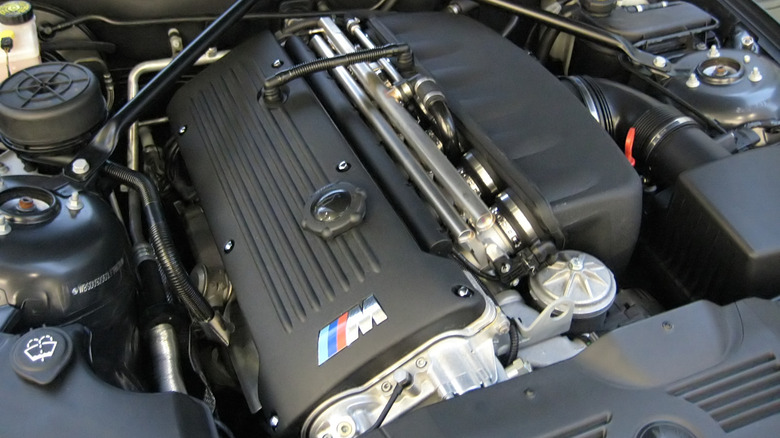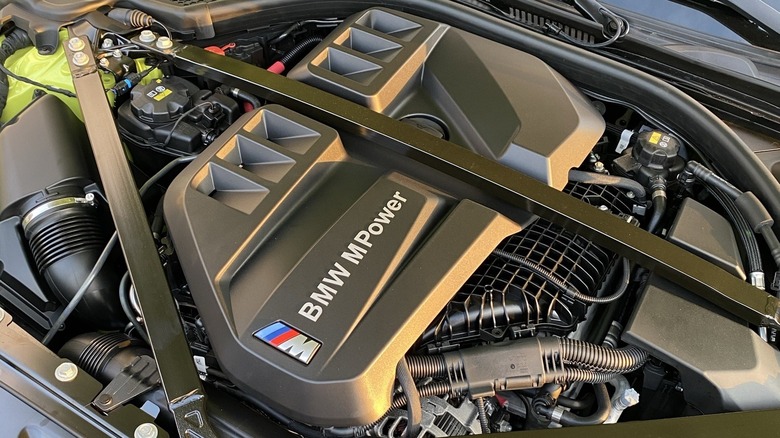German automaker BMW has a long history of making inline-six engines, going all the way back to the early 1930s with the M78 engine. As the decades have passed, there have been many reconfigurations and models to accommodate for changing technologies, along with increasing power and efficiency. The M code at the beginning of that engine name also has a long history in BMW and served as the signifier for the standard engine type that one would find in one of the company’s vehicles, particularly once the 1970s rolled around. You would see this M designation all the way through the early to mid-2000s, when BMW then replaced it with an N to signal a «New Generation» or a B to designate a modular engine.
A letter you would see alongside all of these different engine generations starting in the mid-1980s is S, used to signal that this was a high-performance version of a particular engine. Even after the M label was dropped, S engines continue to get made to this day, and the 21st century has had quite a few of them. Making things a little more confusing, the division that makes these high-performance engines is called BMW M. In 2000, BMW introduced the S54, and in 2019, we got the S58. Despite the fact that there’s only a one digit difference between their names, these are two engines with many differences, each with its own impressive function and place in the company’s history.
What is an S54 engine?

Hatsukari715/Wikimedia
Because these S engines were an offshoot of other engines, you may think that the S54 would simply be the high-performance version of the M54 engine that was also released in the year 2000. However, that is only partially true. In terms of name, that is exactly what it was, but in its build, the two were quite different. Instead, the S54 took its cues from the previous iteration of the S engine, the S50, which was in production from 1992 to 2000.
The S54 was made with a cast iron block, instead of the aluminum block of the M54, and featured a bore and stroke of 3.4 in. by 3.6 in, resulting in 3.2L of displacement, compared to the largest 3.0L variant of the M54. The standard issue S54 was called the S54B32 and was able to generate up to 338 hp and 269 lb-ft of torque, which was anywhere from 17 to 56 hp more than the old S50. This would be the engine you would put in most passenger BMWs, like the E46 M3 or E85 Z4 M Roadster.
BMW also created the S54B32HP variation of the engine, which indicates that this was the high-performance version and was only available in 2003 BMW E46 M3 CSL. This engine upped the power to 355 hp and 273 lb-ft of torque, but it also weighed less due to elements like using a MAP sensor instead of a MAF one and making the intake out of carbon fiber.
[Featured image by Hatsukari715 via Wikimedia Commons | Cropped and scaled | Public Domain]
What is an S58 engine?

Steste8/Wikimedia
Instead of being based off an M or previous S engine, the S58 instead is the performance version of the B58 modular engine from BMW. Introduced in 2019, this engine does use an aluminum block and features a bore and stroke 3.3 in. by 3.6 in. for a displacement of 3.0L. Despite the smaller displacement, the S58 far outshines the S54 when it comes to power with a standard output of 473 hp and 442 lb-ft of torque for those who put one in their F97 X3 M, F98 X4 M, G82 M4, and more. Those numbers increase even more if one chooses the S58 for a competition vehicle, upping the output to 503 hp and 479 lb-ft of torque.
The aluminum block is not the only structural difference between the S58 and S54. Instead of using an aluminum or iron cylinder head, the S58 instead uses a 3D-printed one. Not only does this weigh a great deal less, but it also improves the engine’s ability to cool. That latter point is a big deal for the S58, as it also features three separate radiators and a map-controlled thermostat as other ways to keep the temperature of the engine down.
The two have some similarities. They are still both inline-six engines, and both do feature BMW’s VANOS, which is the company’s variable valve timing system. However, the S58 also utilizes the Valvetronic system to adjust the lift of the valves. Ultimately, the S58 has the benefit of improved technology, but the S54 is still a much loved engine after all these years.
[Featured image by Steste8 via Wikimedia Commons | Cropped and scaled | CC BY 4.0]